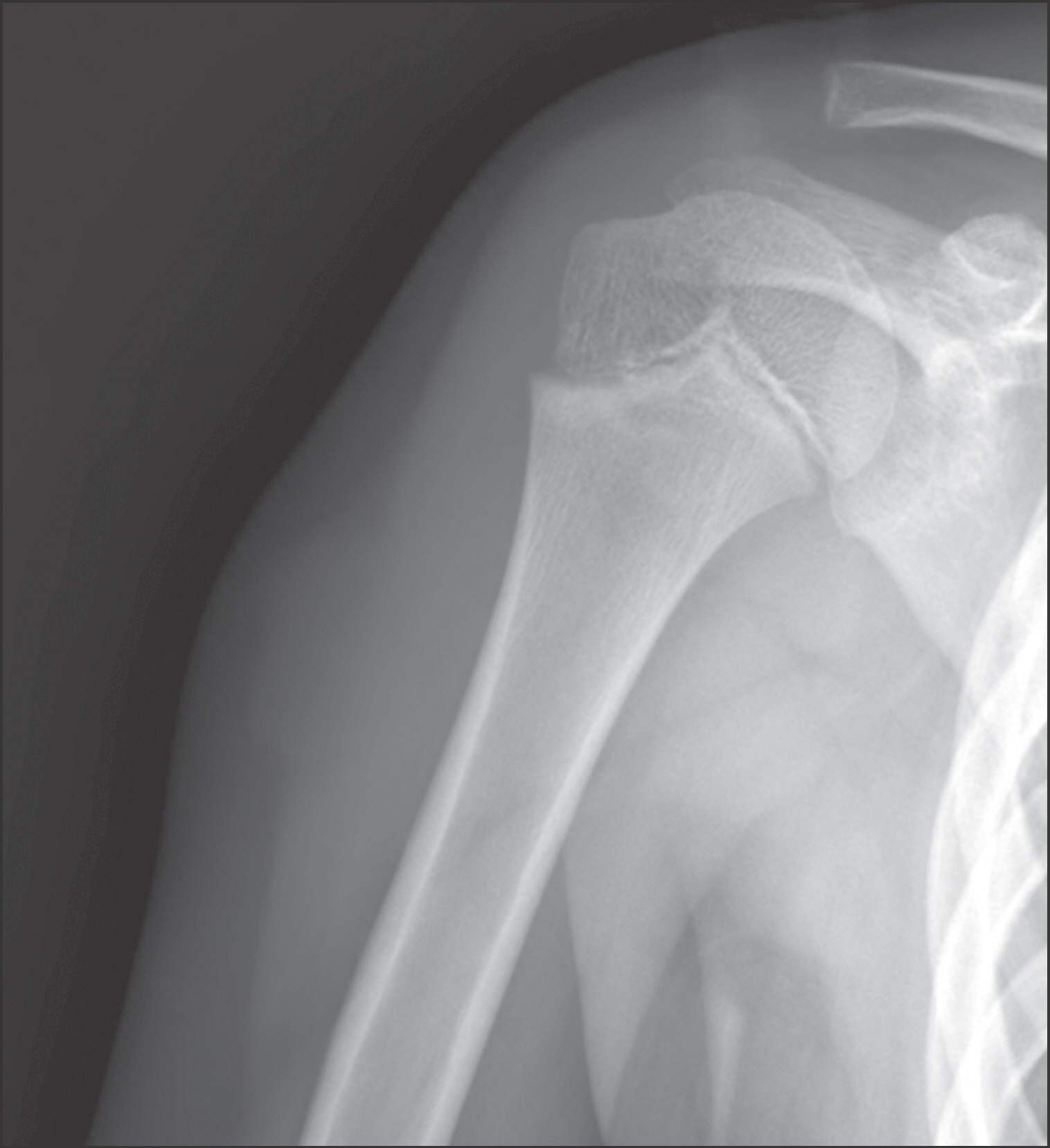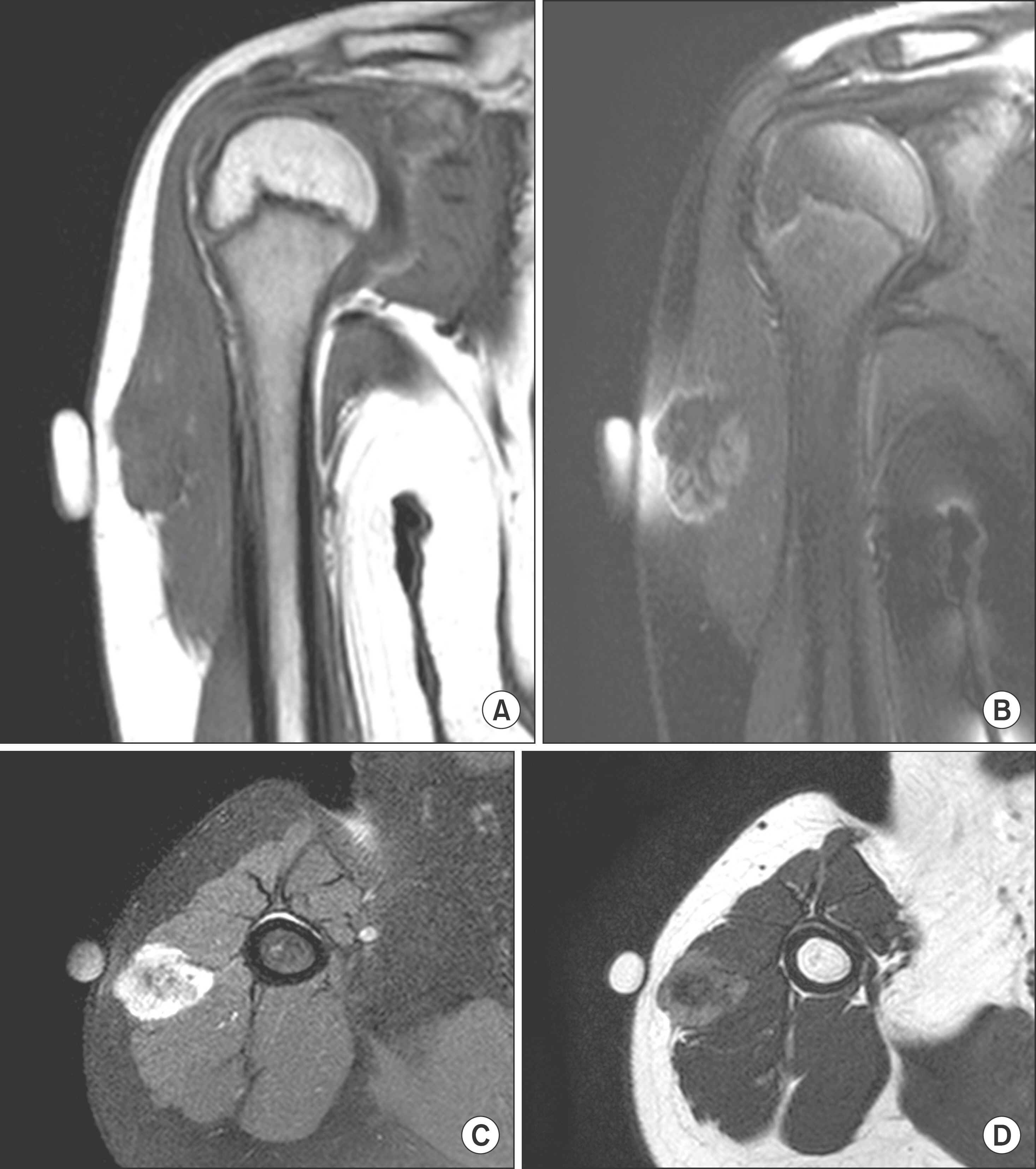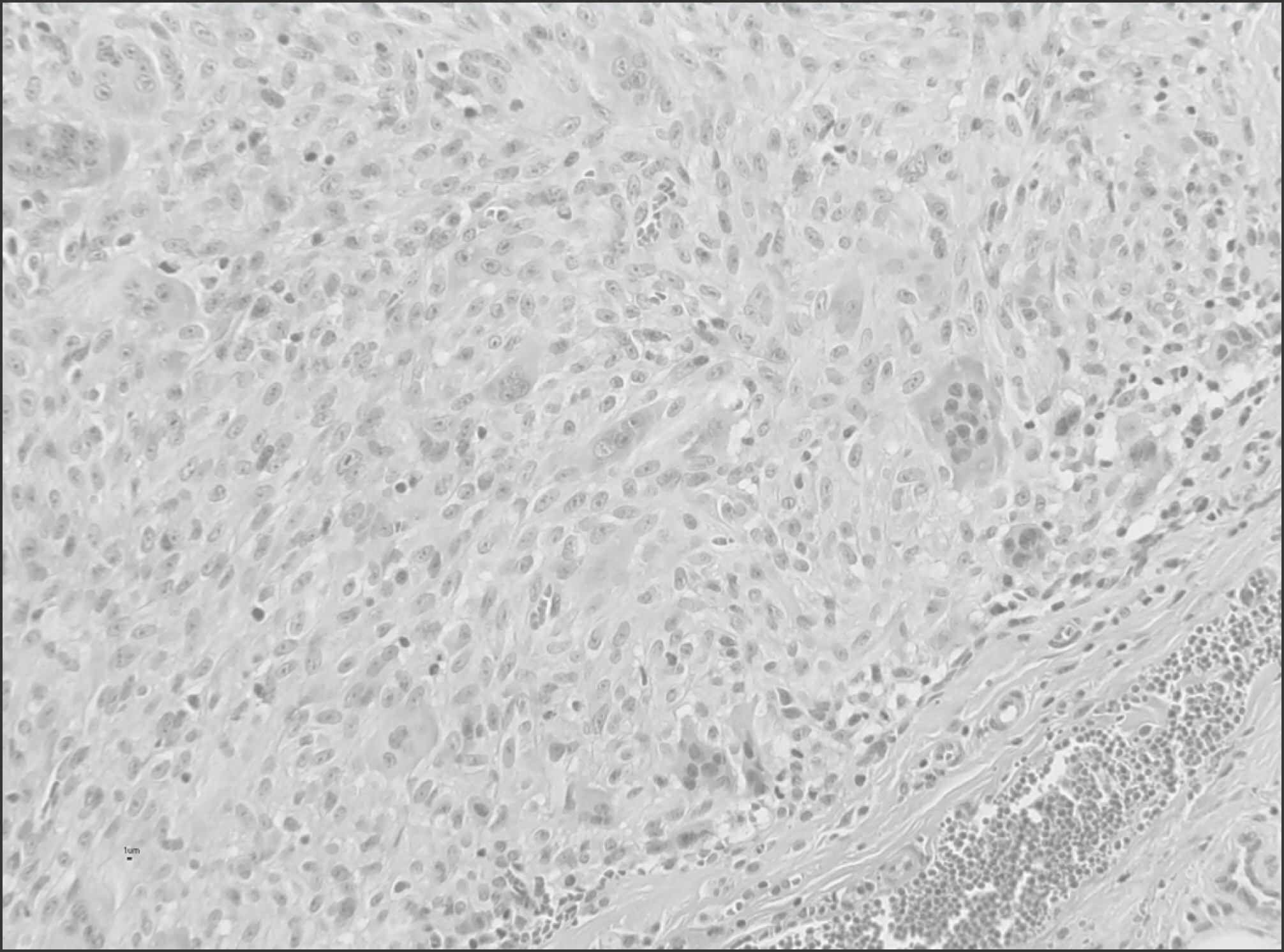J Korean Bone Joint Tumor Soc.
2013 Dec;19(2):87-91. 10.5292/jkbjts.2013.19.2.87.
Diffuse-Type Giant Cell Tumor in Deltoid Muscle
- Affiliations
-
- 1Department of Orthopaedic Surgery, Kyung Hee University Hospital at Gangdong, Seoul, Korea. mozart13@khu.ac.kr
- KMID: 1961764
- DOI: http://doi.org/10.5292/jkbjts.2013.19.2.87
Abstract
- Diffuse-type giant cell tumor is relatively rare than localized giant cell tumor. Moreover, diffuse type giant cell tumor is common in intraarticular area, rarely occurs at intramuscular or subcutaneous layer. We experienced 1 case of giant cell tumor within the deltoid muscle. So we report this case with review of the literatures.
Keyword
Figure
Reference
-
References
1. Ushijima M, Hashimoto H, Tsuneyoshi M, Enjoji M. Giant cell tumor of the tendon sheath (nodular tenosynovitis). A study of 207 cases to compare the large joint group with the common digit group. Cancer. 1986; 57:875–84.
Article2. Somerhausen NS, Fletcher CD. Diffuse-type giant cell tumor: clinicopathologic and immunohistochemical analysis of 50 cases with extraarticular disease. Am J Surg Pathol. 2000; 24:479–92.3. Fletcher CDM, Unni KK, Mertens F. World Health Organization, International Agency for Research on Cancer. Pathology and genetics of tumours of soft tissue and bone. Lyon: IARC Press;2002. p. 112–4.4. Lee GW, Lee KS, Song SH, Kim MK, Yun SH. Snow-man shaped nodular tenosynovitis in the knee. case report. J of Korean Arthroscopy Soc. 1999; 3:44–7.5. Sanghvi DA, Purandare NC, Jambhekar NA, Agarwal MG, Agarwal A. Diffuse-type giant cell tumor of the subcutaneous thigh. Skeletal Radiol. 2007; 36:327–30.
Article6. Yoshida T, Sakamoto A, Tanaka K, et al. Intramuscular diffuse-type giant cell tumor within the hamstring muscle. Skeletal Radiol. 2007; 36:331–3.
Article7. Hepp P, Engel T, Marquass B, Aigner T, Josten C, Niederhagen M. Infiltration of the pes anserinus complex by an extraarticular diffuse-type giant cell tumor (D-TGCT). Arch Orthop Trauma Surg. 2008; 128:155–8.
Article
- Full Text Links
- Actions
-
Cited
- CITED
-
- Close
- Share
- Similar articles
-
- Diffuse-type Giant Cell Tumor of Tendon Sheath Occurring in the Subcutaneous Tissue of Buttock
- Giant Cell Tumor of the Temporal Bone
- A Case of Giant Cell Tumor in the Temporal Bone
- Tenosynovial giant cell tumor of finger, localized type: a case report
- Deltoid Muscle Rupture Combined with Massive Rotator Cuff Tear






